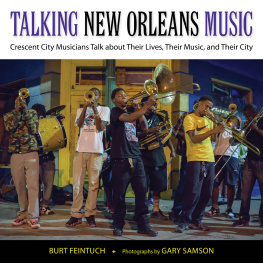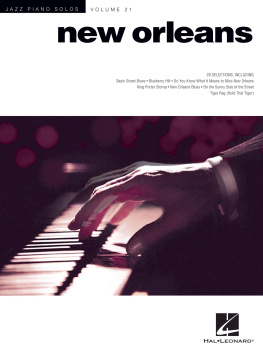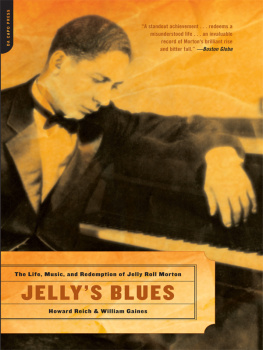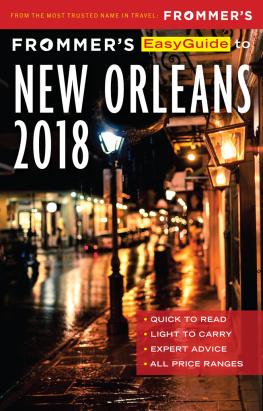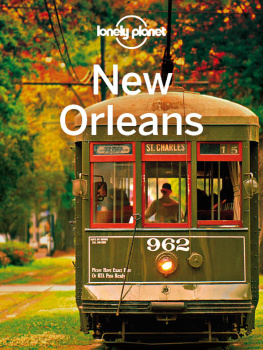

THE PUBLISHER GRATEFULLY ACKNOWLEDGES THE GENEROUS CONTRIBUTIONS TO THIS BOOK MADE BY THE FOLLOWING GROUPS AT THE UNIVERSITY OF CALIFORNIA, SANTA CRUZ:


NEW ORLEANS SUITE
Music and Culture in Transition
Lewis Watts and Eric Porter

UNIVERSITY OF CALIFORNIA PRESS
BerkeleyLos AngelesLondon
Page i. LOUIS ARMSTRONG PARK, 2001.
University of California Press, one of the most distinguished university presses in the United States, enriches lives around the world by advancing scholarship in the humanities, social sciences, and natural sciences. Its activities are supported by the UC Press Foundation and by philanthropic contributions from individuals and institutions. For more information, visit www.ucpress.edu.
University of California Press
Berkeley and Los Angeles, California
University of California Press, Ltd.
London, England
2013 by The Regents of the University of California
Portions of sections 2 and 3 were previously published in Eric Porter, Jazz and Revival, American Quarterly 61, no. 3 (September 2009): 593613.
2009 The American Studies Association. Reprinted by permission.
Excerpt from Saul Williams, Dear New Orleans, liner notes, 2010 Saul Williams.
Library of Congress Cataloging-in-Publication Data
Watts, Lewis, 1946
New Orleans suite : music and culture in transition / Lewis Watts and Eric Porter.
p. cm.
Includes bibliographical references and index.
ISBN 978-0-520-27387-0 (cloth : alk. paper) ISBN 978-0-520-27388-7 (pbk. : alk. paper)
eISBN 9780520955325
1. Popular musicSocial aspectsLouisianaNew Orleans. 2. Hurricane Katrina, 2005Social aspects. I. Porter, Eric (Eric C.) II. Title.
ml3917.u6w37 2013
| 306.484240976335dc23 | 2012026488 |
Manufactured in the United States of America
21 20 19 18 17 16 15 14 13 12
10 9 8 7 6 5 4 3 2 1
The paper used in this publication meets the minimum requirements of ANSI/NISO Z39 .481992 (R 2002) ( Permanence of Paper ).
CONTENTS
ACKNOWLEDGMENTS
First, we would like to thank the people of New Orleans for their hospitality and their inspiration. We are indebted to the following individuals, who hosted us, showed us around the city, patiently shared their insights about it, made necessary introductions, or were just good company: Ayanna Bassioni, Marcie Blanchard, Keith Calhoun, Alison Davis, Joel Dinerstein, Yolanda Estrada, Rashida Ferdinand, Mark Fowler, Donald Harrison Jr., Herreast Harrison, Cherice Harrison-Nelson, Randell Henry, David Houston, Stella Jones, Laura Lawson, Ronald Lewis, Chandra McCormick, Girard Mouton III, Thomas Neff, John ONeal, Georgia Ross, Jim Rowell, John Scott, Juan Suarez, Claire Tancons, Eric Waters, Ronald Waters, and Deborah Willis.
Our research and photography was supported by a Committee on Research Special Research Grant and Faculty Research Grant as well as an Arts Research Institute Major Project Grant, all from University of California at Santa Cruz. Together or individually, we have benefited over the years from comments on our project by members of audiences at the Autonomous University of Baja California, Tijuana, the City College of New York, the Fisher Museum at the University of Southern California, Louisiana State University, the University of Nevada, Reno, the Newark Museum, the San Francisco Art Institute, the San Francisco Jazz Heritage Center, Stanford University, the Tisch School of the Arts at New York University, and multiple venues at UC Santa Cruz. Lewis received important feedback on and sustenance for this project by exhibiting his photographs at the Amistad Center for Art and Culture in Hartford, Connecticut; the San Francisco Museum of Modern Art Artists Gallery; the Alfred C. Glassell Jr. Exhibition Gallery in the Shaw Center for the Arts, Louisiana State University, Baton Rouge; Museum of the African Diaspora, San Francisco; the Sesnon Gallery, UC Santa Cruz; the Zokei Gallery and University Museum, Tokyo; Gallery AUBE, Kyoto; the Nathan Cummings Foundation, New York; the Engulfed by Katrina exhibit at the Tisch School of the Arts, New York University; and during Tarell Alvin McCraneys play, The Brothers, at the Magic Theatre in San Francisco. We are grateful to event organizers and curators at these places for enabling us to share our work and make it better.
Mary Francis of University of California Press believed in this project from the very beginning and provided necessary advice and encouragement along the way. We have benefited from working with project editor Dore Brown, editorial coordinator Kim Hogeland, designer Lia Tjandra, and copy editor Elizabeth Berg. We received invaluable feedback on our book proposal and manuscript from Bruce Raeburn and anonymous readers for UC Press. Portions of sections 2 and 3 were previously published as part of Erics essay Jazz and Revival, which appeared in American Quarterly 61, no. 3 (September 2009): 593613. We appreciate the journals willingness to let us publish this writing again. Feedback from AQs editors and readers helped sharpen the arguments presented here. We give special thanks to Girard Mouton III for his meticulous reading of a draft of the book and for his invaluable corrections and suggestions for revision. He and Eric Waters generously shared their wisdom as longtime photographers of African American New Orleans and assisted with identification of the subjects of some of the photographs. We are grateful to Saul Williams for allowing us to include his poetry at the beginning of section 1 and to Charlotte Gusay for coordinating this arrangement. Publication in this format was made possible by the generous donation of subvention funds by UC Santa Cruzs Humanities Research Institute and Arts Research Institute.
Last but not least, we thank our families, friends, and colleagues for believing in us, encouraging us, and giving us the time to get this done.
PREFACE
FOUNDATIONS
Edward Kennedy Ellington from the District of Columbia composed and performed music for over fifty years. He made quite a name for himself. Along the way, he transformed American music, especially that which some (though not often Ellington) have called jazz. His grace, charisma, and artistic chops inspired a great many reviews and studies of the man and his music, and many photographs. These representations have made Ellington one of the archetypal figures who, for better and for worse, have helped to generate the layers of cultural meaninga kind of noise, if you willthat have become inseparable from the sound.
In the spring of 1970 Ellington went to New Orleans, at the invitation of the promoter George Wein, to perform at the first New Orleans Jazz and Heritage Festival. On April 25 he premiered New Orleans Suite as a five-movement composition. Through these movementsBlues for New Orleans, Bourbon Street Jingling Jollies, Thanks for the Beautiful Land on the Delta, Second Line, and Aristocracy a la Jean Lafitte New Orleans Suite expressed three objectives that defined many of Ellingtons longer works: representing place, representing history, and representing the cultural expressions that constitute places and histories. Ellington recorded these movements a few days later in New York, but he did not stop there. For he was simultaneously working on four additional portraits of prominent musical influences and collaborators associated with New Orleans. He recorded these additionsPortrait of Louis Armstrong, Portrait of Wellman Braud, Portrait of Sidney Bechet, and Portrait of Mahalia Jacksonon May 13. These newer pieces augmented and refocused the representational pallet of New Orleans, its history, and its culture by showcasing black and Creole inhabitants (albeit famous ones) and by expanding the references to musical style and genre.
Next page

